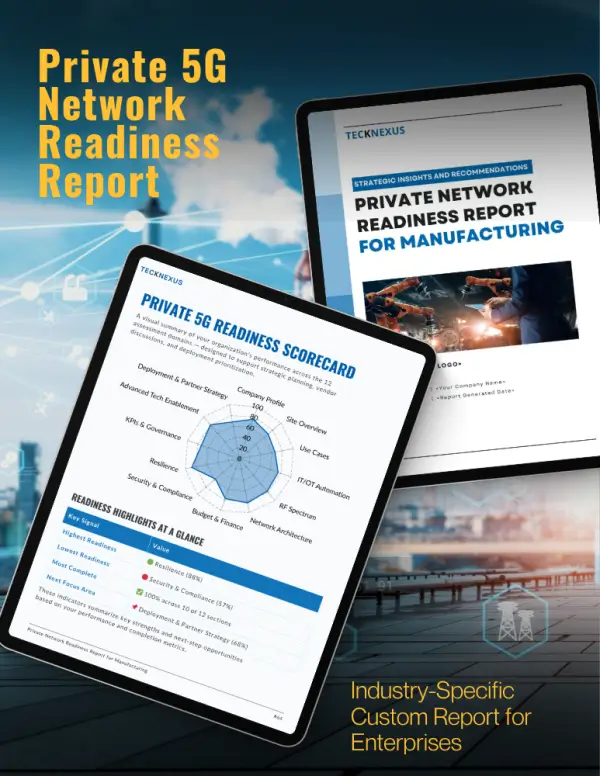Connectivity Challenges in the Mining Sector and the Ericsson-Epiroc Partnership
Adapting Connectivity for Dynamic Mining Operations
Mining operations present unique challenges due to their dynamic nature. As mining progresses over time, connectivity needs change dramatically. Mines require flexible and scalable network solutions that adapt to the evolving layout and demands of their operations. Worker safety and productivity are top priorities, necessitating networks that are reliable, secure, and high-performing. The partnership between Epiroc and Ericsson is focused on meeting these challenges with private networks tailored to mining environments.
Comparing Connectivity Challenges: Above vs. Underground Mining
Connectivity requirements in mining differ significantly between above-ground and underground operations:
-
- Above Ground Mining:
- Easier to manage connectivity due to the clear line of sight for communication assets.
- Requires fewer access points, antennas, and towers.
- GPS navigation is straightforward in open environments, reducing technical complexity.
- Underground Mining:
- Involves deep operations, sometimes extending five kilometers below the surface, with hundreds of kilometers of tunnels.
- Dense rock and steel machinery obstruct communication signals, requiring numerous access points and advanced technologies to maintain connectivity.
- Sharp corners and narrow tunnels add to the challenge, making Wi-Fi insufficient for consistent communication.
- Above Ground Mining:
To address these challenges, extensive testing has been carried out on Wi-Fi, 4G LTE, and 5G technologies. Private 5G networks, with their ability to provide high bandwidth, low latency, and secure connections, have proven to be the most effective solution for underground mining operations. The collaboration with Ericsson has been critical in designing and deploying these networks, overcoming physical and technical obstacles.
Overcoming Connectivity Barriers in Remote Mining Locations
Mining operations are often situated in remote areas, far from urban centers. In countries like Australia, mines are located deep inland, away from population hubs. Building and maintaining infrastructure in such isolated locations is a significant challenge. Private networks have become a lifeline, providing robust connectivity that supports operations despite the logistical difficulties posed by these remote locations.
How Epiroc and Ericsson Improve Safety and Efficiency
Enabling Reliable Communication for Safer Operations
The collaboration between Epiroc and Ericsson has delivered robust private network solutions that enhance mining operations in several ways:
-
- Real-Time Data Access: Private networks enable continuous monitoring of machine health, usage, and location. This real-time data improves operational efficiency and safety by enabling quick responses to issues.
- Worker Safety: By leveraging 5G connectivity, workers can operate machinery remotely from safe locations, such as air-conditioned surface offices. Remote and teleremote operations have significantly reduced the risks associated with high-pressure, high-temperature, and hazardous zones deep underground.
- Automation Capabilities: Reliable networks are the backbone of automated systems, allowing seamless integration of autonomous vehicles, sensors, and other digital tools into mining operations.
Productized Solutions for Advanced Mining Use Cases
The partnership has resulted in innovative solutions like Epiroc’s epicellular-based solution, combined with Ericsson’s EP5G private network. These solutions have been co-developed and tested to address the connectivity demands of modern mining, enabling the automation and digitalization of operations. By providing flexible and scalable architectures, these solutions are helping mining companies achieve safer and more efficient operations.
Future Technologies: AI, Robotics, and 5G in Mining
Transforming Mining with 5G, AI, and Robotics
The convergence of 5G, AI, and robotics is transforming the mining industry. Private 5G networks now enable the deployment of up to 10 mining machines in a single automation cell, compared to just three under older Wi-Fi systems. This scalability is crucial for meeting the operational needs of larger mining companies, which aim to manage 20 machines in a single cell in the future.
How AI and 5G Boost Safety and Efficiency in Mining
Combining 5G with AI and machine learning provides significant operational benefits:
-
- Predictive Maintenance: AI models analyze real-time machine data to predict and prevent failures, minimizing downtime and maintenance costs.
- Machine Health and Performance Insights: Continuous data collection and analysis allow for better understanding and optimization of machine operations.
- Enhanced Safety and Efficiency: These technologies enable precise monitoring of operations, reducing human intervention in hazardous areas and optimizing resource usage.
By integrating these technologies, mining operations can achieve greater safety, efficiency, and productivity while addressing the industry’s growing focus on sustainability and operational excellence.
Standardizing and Scaling Mining Solutions
Leveraging Standards for Scalable Mining Networks
Standards are critical for the scalability of mining solutions. Epiroc and Ericsson leverage globally recognized 3GPP standards for 4G and 5G, ensuring interoperability and reducing the complexity of deployments. These standards simplify network integration and allow mining companies to adopt proven solutions more efficiently.
Proven Frameworks for Deploying Mining Networks
The collaboration has developed successful blueprints based on deployments at various mining sites. These blueprints demonstrate how private networks can be implemented effectively, offering other mines a roadmap to follow. Companies can start small with a basic core and minimal radios, then scale their networks as their needs grow.
Making Private Networks Accessible Across Mines
Private networks are inherently simpler to deploy than traditional large-scale networks. This ease of deployment facilitates wider adoption across the mining industry, enabling companies to benefit from advanced connectivity solutions without significant upfront complexity.
Trends and Future Directions in the Mining Sector
Trends Shaping the Future of Mining Operations
The mining sector is undergoing rapid advancements driven by three major trends:
-
- Automation: Autonomous machinery and automated processes are becoming central to mining operations, improving efficiency and safety.
- Digitalization: Data-driven decision-making and digital tools are transforming operational strategies, enabling better resource management.
- Electrification: The shift to electric machinery is reducing the environmental footprint of mining operations.
How 5G Powers Mining’s Automation and Digitalization
5G connectivity is the foundation of these advancements. It enables reliable operation of multiple automated machines, supports real-time data exchange, and integrates seamlessly with emerging technologies like AI and robotics. The deployment of 5G networks is critical for realizing the full potential of automation, digitalization, and electrification in mining.
5G’s Role in Sustainable Mining Practices
Sustainability is becoming a top priority for the mining industry. Technologies developed by Ericsson, such as power-efficient radio solutions, reduce energy consumption by up to 60% per transmitter, contributing to lower overall carbon emissions. This aligns with the global push for environmentally responsible operations and supports the industry’s long-term goals.
Future-Focused Strategies for Mining with 5G
While 6G development is on the horizon, the immediate focus is on optimizing 5G deployments. The integration of AI, machine learning, and advanced analytics with 5G will continue to drive improvements in efficiency, safety, and sustainability. Mining companies are shifting their focus from optimizing daily operations to refining processes by the hour, emphasizing precision and performance in every aspect of their activities.
Driving the Future of Mining with 5G and Innovation
The Epiroc-Ericsson partnership exemplifies how innovative connectivity solutions can address the unique challenges of the mining sector. By combining robust private networks with cutting-edge technologies like AI and robotics, the collaboration is driving safer, more efficient, and sustainable mining operations. As the industry continues to evolve, the partnership’s focus on scalability, standardization, and sustainability ensures that mining companies are well-equipped to meet future demands. With 5G as the backbone, the mining industry is poised to achieve unprecedented levels of productivity, safety, and environmental responsibility.














